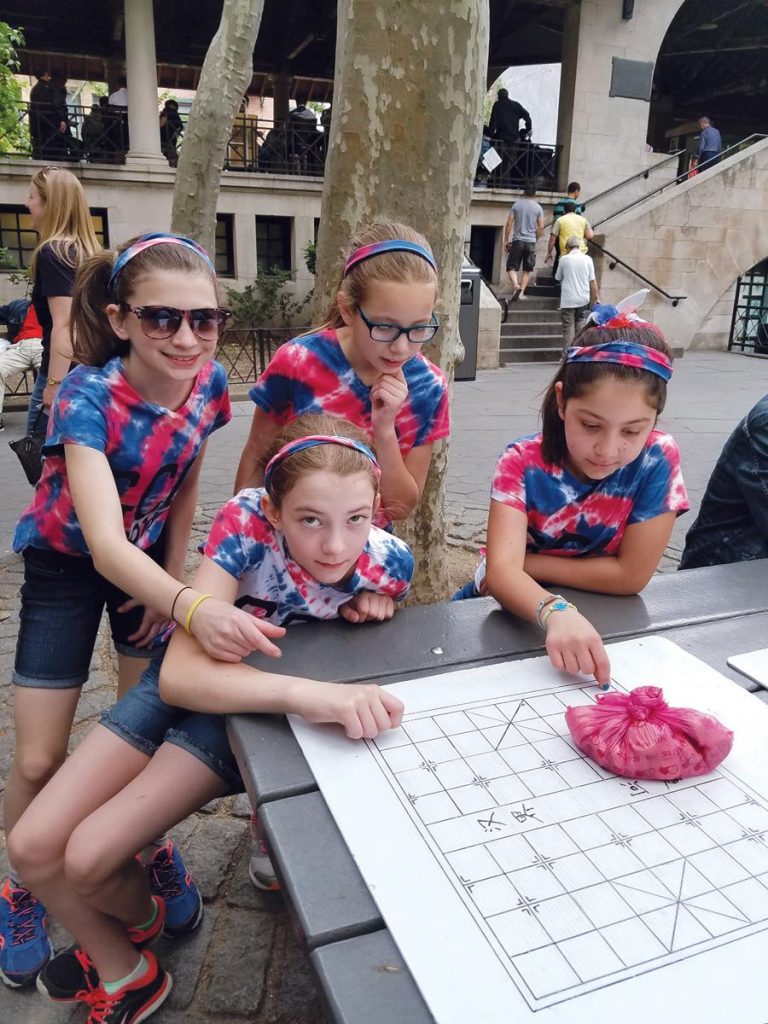By Vanessa Day
In class, phones are discouraged, against the rules, and must be kept out of sight. It would be odd for an educator to ask a student to use their phone while in school because it might distract them from the lesson. But what if a phone could become the lesson? With a digital scavenger hunt, it can.
 Smartphones are tools that can lend themselves to an educational purpose, especially when traveling. A number of companies have leveraged the power—and abundance—of technology to create instructive and entertaining hunts for students.
Smartphones are tools that can lend themselves to an educational purpose, especially when traveling. A number of companies have leveraged the power—and abundance—of technology to create instructive and entertaining hunts for students.
Founded in 2008, Stray Boots has brought the traditional scavenger hunt into the digital age, creating mobile hunts in over 40 cities around the world. Your students can enjoy these interactive and exciting games. They not only encourage teamwork and quick thinking, but also allow students to get to know a city in a different way.
“With our scavenger hunts, students will explore some of the city’s most interesting sights and streets,” says Ido Rabiner, CEO of Stray Boots. “While learning and working together, all through an easy-to-learn interface on their very own cell phones.” This is a new bonding experience; a detour from the classic trust falls of old.
It works like this: You assign students to teams—and you can have as many teams as you want—and each team has a captain, perhaps a chaperone. The captains will receive a link on their phones that will access the scavenger hunt tour. Maps and instruction sheets are provided as additional tools. Teams explore the city through a series of challenges that take them to major landmarks and places a little off the beaten path, says Rabiner. Students must solve clever riddles, find inscriptions and take goofy photos in order to make it to the finish. After completing a challenge, teams earn points and receive an interesting fact about the city.
“It’s not just about walking from one place to another until the tour is over,” says Rabiner. “It’s about learning the history of the city, getting to know places they will not regularly visit, and it’s about working together as a team.” For group organizers, it’s a perfect addition to a student trip.
 In order to arrange one of these scavenger hunts for a student group, all you have to do is a fill out a form on the Stray Boots website with all the details of your trip—location, number of participants, date and personal details. The Stray Boots event planners take care of everything else. Scavenger hunts can accommodate groups of all sizes, from 15 to 300-plus, and the price is based on the number of participants you have. Student groups receive special discounts. There are pre-made hunts in dozens of cities, and most organizers opt for these. You can, however, also have them customized for your student trip or have a new one built.
In order to arrange one of these scavenger hunts for a student group, all you have to do is a fill out a form on the Stray Boots website with all the details of your trip—location, number of participants, date and personal details. The Stray Boots event planners take care of everything else. Scavenger hunts can accommodate groups of all sizes, from 15 to 300-plus, and the price is based on the number of participants you have. Student groups receive special discounts. There are pre-made hunts in dozens of cities, and most organizers opt for these. You can, however, also have them customized for your student trip or have a new one built.
“We have many groups asking us to add specific challenges or themes to their scavenger hunts,” says Rabiner. “And our team works with them to make sure their hunt will be adjusted to their needs.”
There are many other companies that offer digital scavenger hunts you can play on your phone. Urban Adventure Quest has hunts in nearly 40 cities in the U.S. and Canada. Similar to Stray Boots, the quests are designed to engage students through fun and interactive activities, helping them with critical thinking and social skills. Students can be divided into teams of 3-5, and each team competes against others to solve clues while learning about the city. Student groups receive a 20% discount on the price of the scavenger hunt.
Even if you decide not to go for the mobile format, you can still plan a scavenger hunt for your student group. Many convention and visitors bureaus offer hunts around their cities, and museums often have hunts specific to their exhibits.
Regardless of the platform you choose, a scavenger hunt provides students with an interesting and fun way to explore a city. It not only introduces them to new places, but it allows them to work together with their peers, building trust and encouraging teamwork.






